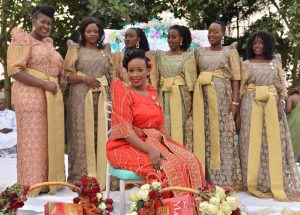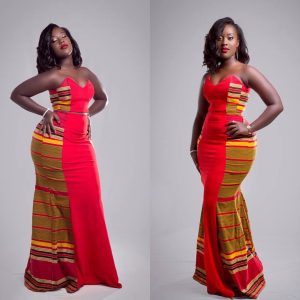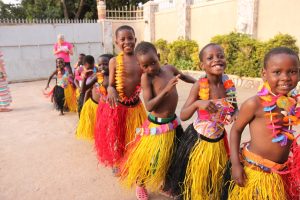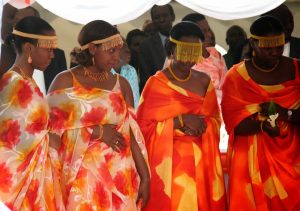Cultural wear in Uganda implies that all tribes have traditional outfits that distinguish them from one another, and clothing is part of culture because it defines who people are.
All tribes have traditional outfits, which are mostly worn during traditional ceremonies such as introduction parties, giveaways, coronation ceremonies, etc. These traditional costumes include
Kanzu;
Kanzu is a traditional cotton cloth brought by Arab merchants in the late 19th century. It consists of a white or cream fabric made from silk, cotton, or linen of which linen kanzus are the most expensive. When it first arrived, it was used by upper-class aristocrats such as the Buganda king but has gradually become widely worn by ordinary men across all regions of Uganda during cultural functions. A trouser is worn beneath the kanzu and a coat to make it complete. However, it is important to note that the traditional kanzu is different from that worn by Muslims.
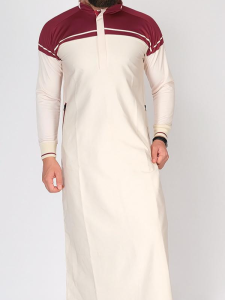
Gomesi/Busuuti;
This is the traditional attire for women from Buganda and Busoga. It is a long dress touching the ground with triangular shaped shoulder design, a square neck, and a top clothing on one side around the hip area. A belt is tied around the waist to the hold the dress also known as ‘kitambala’. It is accompanied with an undergarment called the ‘kikoyi’ that people wear to add weight.
Kikoyi;
This is a stripped, multi-colored piece of cloth that is attached to several tribes. The most common design has hanging threads at the side of the cloth, which are said to guide a person on how to wear it.
It acts as a skirt for the Suuti and provides the shape of a gomesi.
Grass skirts;
These are worn by Basoga and Baganda when performing their traditional dances. They look like strings of grass blades that are sewn together and, at times, painted with different colors to come up with a colorful skirt.
Mushanana/Suuti/Suuka;
Suuti is a three-piece soft-layered garment with a half top dress that is usually up to knee length and is worn over a wrapper skirt, known as the ‘Kitambi’ and a shawl wrapped around the shoulders. Different tribes tie the shawl differently; the Banyankole place it across the shoulder, while the Batooro tie it around the armpit. This attire is popular among women in western Uganda, especially in Banyankole, Bahima, and Batooro.
Lesu;
The lesu is popular among people from Northern Uganda, and the Iteso from Eastern Uganda. The sheet-like cloth is used by both men and Itesot women. Young men wrap a colored squared lesu around their waist, pairing it with a colored vest. Elders forego the vest and tie the lesu over the shoulders. The dress code is incomplete without a stick and a stool. They also wear sandals made from car tyres. The Karimojong women wear a skirt sewn from hides and decorated with beads. They pair it with a vest similar to that worn by men.
Uganda has a variety of traditional attires which blend and work well together just like it’s people.

